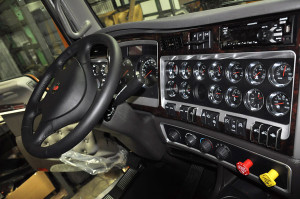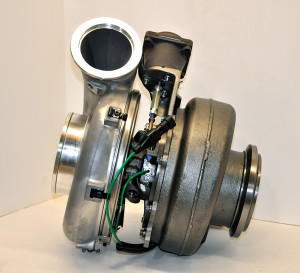 The school of hard knocks – until you have gone to this tough school, you do not have the proper education to run a business or this country. I know that all of you in the trucking industry are students at this school, but for some reason we continue to stay in this challenging industry. I would like to see some of the people that control our lives attempt to take a loaded tractor-trailer grossing 80,000 lbs. across Kansas during an ice storm where the snow is blowing sideways across the interstate.
The school of hard knocks – until you have gone to this tough school, you do not have the proper education to run a business or this country. I know that all of you in the trucking industry are students at this school, but for some reason we continue to stay in this challenging industry. I would like to see some of the people that control our lives attempt to take a loaded tractor-trailer grossing 80,000 lbs. across Kansas during an ice storm where the snow is blowing sideways across the interstate.
Harassment from the “powers that be” continue daily, and only seem to get worse every year. When do you think we will ever get a politician that will stick up for this trucking industry that makes everyone’s life possible? With the failure rate so ridiculously high of the semi-truck engines starting in 2003, why haven’t the top dogs at the engine companies spent some “quality time” with the politicians and various organizations that are putting such stringent restrictions on today’s diesel engines?
I think it’s time we get non-political people in Washington D.C. that have been to the proverbial school of hard knocks. If you have never been self-employed, you have no idea of what we go through on a daily basis to peck out a living, to pay our taxes and make it possible for others to enjoy their lives. Maybe all of us in the trucking industry should go on unemployment and let those in power figure out how to get the goods delivered so everyone (including themselves) can live. If you’re an owner-operator, than you’re self-employed, and you, along with me, are still going to the school of hard knocks.
Let’s move on to leaking windshields. The 379 Peterbilts that many of us love so dearly are getting older and require some extra attention. When the windshields leak, the water intrusion is not always visible – it oftentimes gets behind the fuse panel, and the corrosion process begins. As the wires corrode, the electricity will begin to jump from wire to wire, playing havoc on the gauges, engine ECM and the truck’s lights. Our electrical engineering department has repaired many of these problems, and the last one required two days of making wiring harnesses, repairing damaged wires and replacing the pins in the fuse panel. Like our bodies, as our trucks get older, they require more attention. Don’t let a small windshield leak ruin your electrical system.
 Now, let’s switch gears to turbochargers. We have been asked a lot lately about our new variable geometry turbo (VGT or VNT) tunes, and how they improve performance. It seems that the general consensus on VG turbos is not good – they have a reputation for premature failures and many accompanying performance issues. While it is true that the traditional fixed vane turbocharger, which is much simpler and has been proven to be reliable for up to a million miles or more, variable geometry turbos surpass the traditional turbo in many aspects. With this in mind, I will give a little background on VGTs and explain what you can do to get the best performance and longest life from these types of turbos.
Now, let’s switch gears to turbochargers. We have been asked a lot lately about our new variable geometry turbo (VGT or VNT) tunes, and how they improve performance. It seems that the general consensus on VG turbos is not good – they have a reputation for premature failures and many accompanying performance issues. While it is true that the traditional fixed vane turbocharger, which is much simpler and has been proven to be reliable for up to a million miles or more, variable geometry turbos surpass the traditional turbo in many aspects. With this in mind, I will give a little background on VGTs and explain what you can do to get the best performance and longest life from these types of turbos.
How does a VGT work? In the case of a DDEC 5 engine, the actuator is pneumatically-controlled by the VPOD. The VPOD is basically an electrically-controlled air valve. In short, the ECM sends a signal to the VPOD which varies how much air pressure to send to the actuator. The actuator is moved by the force of the air pressure, which pushes the rod, moving the crank pin and the unison ring, which in turn moves the vanes.
The first thing we notice as a difference between a fixed vane and a variable vane is, obviously, that one has variable vanes. But what does that mean, variable? This means that a VG turbo has the ability to vary its effective aspect ratio (A/R ratio) as conditions change. A/R is the ratio of the area of the exhaust gas passage, to the radius from the center of the turbine wheel, to the point defining the center of that area. A variable geometry turbo can act like a small turbo under light loads and a large turbo under heavy loads. This means that a VG turbo has little lag and is able to maintain optimum A/R. VGTs also use their vanes to create excess exhaust manifold pressure to force more EGR through the EGR valve. Although back pressure is detrimental to fuel efficiency, it is needed for sufficient EGR to meet emission standards. VGT’s ability to change pitch allows the turbine to work at almost all engine speeds and loads, creating a very flat torque curve.
There are many small moving parts in a VG turbo and, unfortunately, they reside in the hottest part of the engine. This extreme heat is very hard on these small moving parts, which causes many of the premature failures. This, accompanied by numerous sensors monitoring the turbo, leads to many more complications. But, there are a few things you can do to keep your VG turbo healthy.
First, purchase a pyrometer. A pyro will allow the driver to closely monitor the exhaust gas temperature (EGT). By keeping the EGTs lower (a max sustained temperature of 950 to 1,000 degrees Fahrenheit), the turbo will live longer. This is the temperature with the thermocouple in the exhaust pipe – add 300 degrees more if the thermocouple is in the exhaust manifold. You should also check for air inlet restrictions (or switch to a less restrictive Fleet Air filter) and exhaust restrictions (or install our performance mufflers and/or our ported exhaust manifold). Lastly, a radiator with more tubes will keep the engine temperatures cooler. A free-flowing intake and exhaust will lower your EGT, and that is a good thing.
Pittsburgh Power’s economy tune increases fuel mileage by improving VGT response in transient conditions and by further optimizing the engine’s efficiency by reducing the excess exhaust back-pressure. This allows the engine to breathe easier and have greatly-improved throttle response. This tune, in conjunction with our intake and exhaust products, will improve your engine’s power, throttle response, reliability and fuel efficiency.
If you have any comments or questions, I can be reached at Pittsburgh Power Inc. in Saxonburg, PA at (724) 360-4080.
